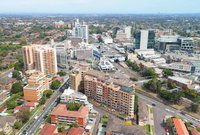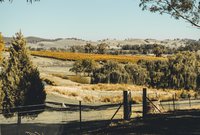PRD Chief Economist, Dr Diaswati Mardiasmo believes the property market is once again entering uncertain times, ruled by the balance in demand and supply of each specific area.
“2022 brings new challenges to the property market, on top of issues faced in 2021. The Reserve Bank of Australia has changed its policy stance, whilst the Federal Government has not,” Dr Mardiasmo said.
“As a result, each property market is reacting differently to the current forces at hand. Depending on demand and supply, the market can still be growing, holding steady, or turning to a decline”.
PRD Managing Director, Todd Hadley said the market is absorbing current disruptions and shocks, but PRD’s latest report, Different markets, different speeds: Where to from here? clearly shows there is a divergence in market growth, and that current policies are creating uncertainty and angst.
The report includes property market data up to and including June 2022.
Key findings include:
- In the 12 months to the 1st half of 2022, Sydney and Melbourne saw a turn in their markets, with a decline in median house price growth. However, Brisbane, Perth, Hobart and Darwin did not. Regional markets grew at a slower speed, but still recorded double-digit percentage growth.
- Consumer confidence has taken a 180-degree turn in the past 12 months. The first 6 months in 2022 saw confidence declining to below the 100 index point positive benchmark, at 88.4 index points in June 2022. This was akin to confidence in June/July 2020 (during COVID-19).
- Rental yields are moving at different speeds depending on the balance between property price and rental price growth. Investors are making decisions on a case-by-case basis.
- There is a change in the housing finance commitment dynamic, with the proportion of owner-occupiers declining from 72% to 65%, and investors increasing from 28% to 35%.
- The Time to Buy a Dwelling index suggests a divergence, decreasing severely in QLD and TAS by -41.2% and -36.9%, respectively. The decrease was not as drastic in VIC and SA, declining by single digits of -1.2% and -9.3%, respectively.
“Policy rate (cash rate) expectations across different countries suggest a similar approach to ours, with aggressive cash rate hike expectations for 2022-2023, and a levelling out in 2024 and 2025,” Dr Mardiasmo said. “That said, a key component in 2022 is our demographics. International students and long-term overseas visitors are back in droves, translating to a higher level of demand for housing stock.”
“Many more events and disruptions will colour the rest of 2022 and early 2023, creating a seemingly never-ending seesaw of demand and supply balance in the Australian property market,” Dr Mardiasmo said. “Where to from here? The key is in localised, granular market analysis.”






